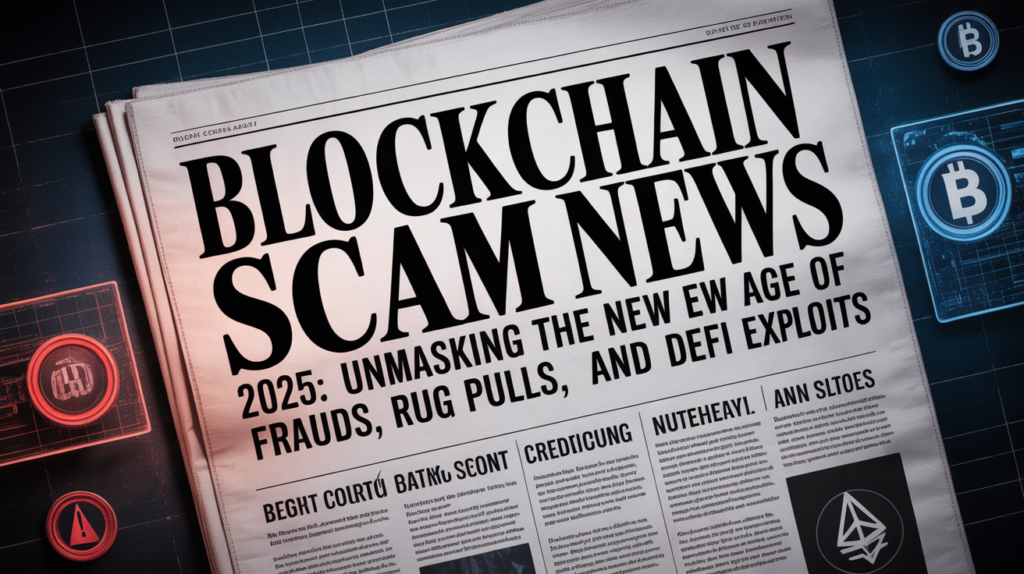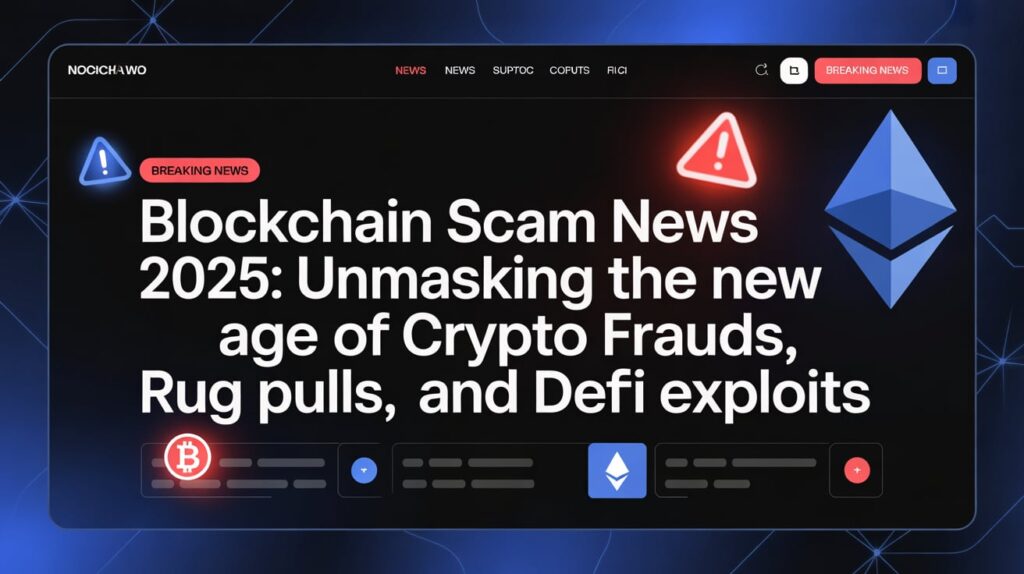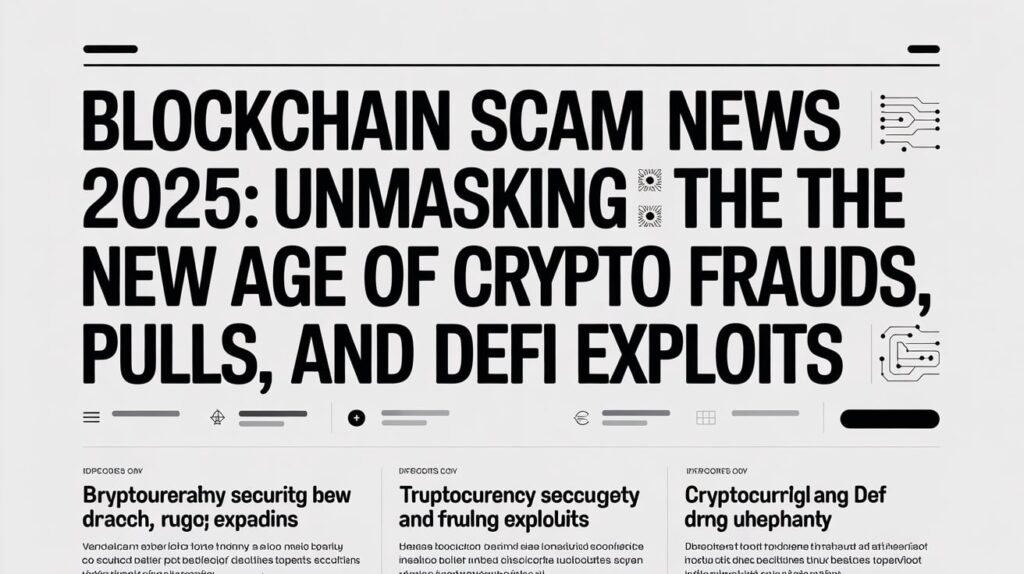Blockchain Scam News 2025: Unmasking the New Age of Crypto Frauds, Rug Pulls, and DeFi Exploits
In the fast-paced world of cryptocurrencies, 2025 has proven to be a pivotal year — not only for innovation but also for deception. According to BTCMARKETNEWS, the digital finance landscape is witnessing a surge in sophisticated scams that threaten both seasoned investors and new entrants. This comprehensive Blockchain Scam News 2025 report dives deep into how modern fraudsters are exploiting blockchain technology’s decentralized structure to orchestrate high-profile rug pulls, phishing attacks, and DeFi exploits.
The Rise of Blockchain Scams in 2025
The blockchain industry continues to revolutionize global finance, but its transparency and anonymity also attract cybercriminals. As the market capitalization of cryptocurrencies surpasses trillions, scammers have evolved — adopting AI-driven deception, fake DeFi protocols, and cross-chain fraud schemes.
Recent investigations from BTCMARKETNEWS reveal that in 2025 alone, over $3.2 billion worth of digital assets have been stolen through various blockchain scams. The alarming part? Many of these scams are not isolated — they are organized, tech-savvy, and disguised under legitimate-looking blockchain ventures.
Top Blockchain Scam Trends in 2025
1. Rug Pulls Masquerading as AI-Powered Projects
Rug pulls remain the most destructive form of crypto scam in 2025. Fraudsters create “promising” DeFi or AI-integrated blockchain projects, attract investors through social media hype, and disappear once liquidity peaks.
One infamous case this year was “MetaYieldX,” which lured investors by promising decentralized AI staking rewards. Within 48 hours, the project vanished, stealing $110 million in user funds. This incident became a headline feature in Blockchain Scam News 2025, showcasing the new face of fraud wrapped in futuristic branding.
2. Phishing and Fake Airdrops
Scammers are exploiting the rise of Web3 wallets and airdrop culture. Fake airdrop campaigns promising free tokens trick users into connecting their wallets to malicious smart contracts. Once approved, the attacker drains all assets.
BTCMARKETNEWS analysts note that over 30% of wallet-based thefts in 2025 originate from phishing campaigns disguised as legitimate DeFi or NFT promotions.
3. DeFi Protocol Exploits and Smart Contract Manipulation
While decentralization is the foundation of blockchain, it also introduces vulnerabilities. Poorly audited smart contracts are easy targets for hackers. Exploits like flash loan attacks, oracle manipulation, and liquidity drain strategies have cost investors billions.
In one major incident, a DeFi exchange suffered a $450 million loss due to a manipulated oracle feed — the largest exploit mentioned in Blockchain Scam News 2025 so far.
4. Cross-Chain Bridge Frauds
As interoperability between blockchains increases, cross-chain bridges have become gateways for theft. Hackers exploit weaknesses in bridging contracts to mint fake tokens or duplicate transactions.
These bridges, designed to improve blockchain communication, are turning into hotspots for large-scale heists. The Blockchain Scam News 2025 report lists at least five bridge exploits exceeding $100 million each.
5. Deepfake Endorsements and Influencer Manipulation
AI-generated videos featuring deepfake influencers, celebrities, or even fake CEOs have flooded crypto YouTube and X (Twitter). Scammers use these videos to promote fake presales or token launches.
BTCMARKETNEWS found that deepfake campaigns increased 280% in 2025 — a stark warning for investors relying on social proof.
How Blockchain Scammers Operate in 2025
The sophistication of scams this year stems from technology convergence. Criminals now leverage AI, machine learning, and automation to mimic legitimate blockchain activity. Here’s how modern fraudsters execute their plans:
-
Step 1: Create credibility — Fake websites, verified-looking social accounts, and cloned whitepapers.
-
Step 2: Deploy smart contracts — Malicious contracts programmed to siphon funds or restrict withdrawals.
-
Step 3: Build community trust — Paid influencers and bots inflate engagement.
-
Step 4: Execute the exit — Once liquidity peaks, assets are transferred to mixers or privacy chains.
These methods make recovery nearly impossible — a recurring theme in Blockchain Scam News 2025 investigations.
Regulatory Crackdown: Governments Strike Back
Governments and blockchain watchdogs are taking notice. In the United States, the SEC and CFTC have initiated multiple lawsuits against fraudulent DeFi startups. The EU Digital Finance Regulation 2025 introduces stricter auditing requirements for all blockchain-based financial services.
India and Singapore, two growing crypto hubs, have launched specialized blockchain forensics units to track on-chain scams. As BTCMARKETNEWS reports, 2025 marks the strongest coordinated global effort yet to combat digital asset fraud.
How to Identify and Avoid Blockchain Scams
To protect yourself from becoming part of the next Blockchain Scam News 2025 headline, follow these expert safety strategies from BTCMARKETNEWS analysts:
-
Verify the Team and Whitepaper – Always cross-check developer identities on LinkedIn, GitHub, and verified crypto forums.
-
Audit the Smart Contract – Look for third-party audits by reputable firms like CertiK or PeckShield.
-
Avoid Unrealistic Returns – Any project promising “guaranteed 1000% APY” is a red flag.
-
Test Small Transactions First – Before investing large amounts, test withdrawals with small deposits.
-
Watch for Community Authenticity – Scammers often inflate Telegram and Discord members with bots.
-
Secure Your Wallets – Never connect your wallet to suspicious sites or links shared via social media.
These steps can dramatically reduce your exposure to scams.
The Future of Blockchain Security
Despite the grim rise in frauds, blockchain technology itself is not the enemy. In fact, innovation in on-chain analytics, AI-powered fraud detection, and decentralized KYC solutions is growing stronger.
BTCMARKETNEWS predicts that by 2026, real-time blockchain monitoring systems will become mainstream, automatically flagging suspicious activity before damage occurs. Industry collaboration between exchanges, auditors, and cybersecurity firms will be crucial to restoring trust in decentralized finance.
Conclusion
As the digital revolution accelerates, so do the dangers lurking behind its code. The Blockchain Scam News 2025 landscape paints a sobering picture of how innovation can be both a weapon and a shield.
To navigate this new age of crypto frauds, investors must rely on vigilance, education, and trustworthy information sources like BTCMARKETNEWS. The promise of blockchain is immense — but only those who stay informed and cautious will reap its rewards safely.
FAQs – Blockchain Scam News 2025
1. What is the most common blockchain scam in 2025?
Rug pulls remain the most prevalent, where developers abandon projects after collecting investor funds.
2. How much money has been lost to blockchain scams in 2025?
Over $3.2 billion has been reported stolen globally, according to BTCMARKETNEWS data.
3. Are DeFi projects still safe to invest in?
Yes, but only if audited, transparent, and backed by verified teams. Always check for security certifications.
4. Can stolen crypto be recovered?
Recovery is rare, but advanced blockchain forensics and regulatory intervention have made small recoveries possible.
5. How can I stay updated on blockchain scam alerts?
Follow trusted media like BTCMARKETNEWS and verified blockchain watchdog platforms for real-time scam updates.



